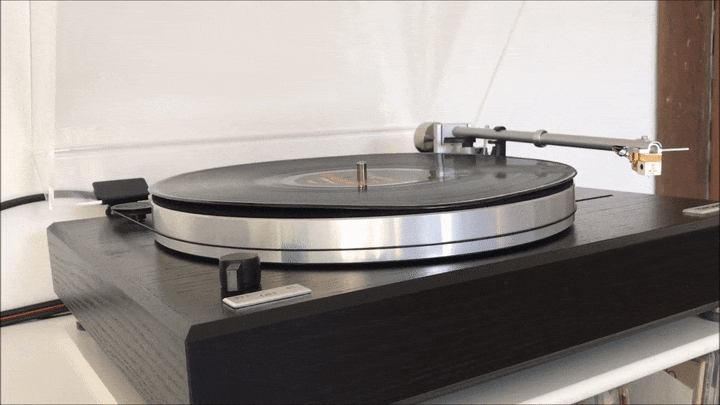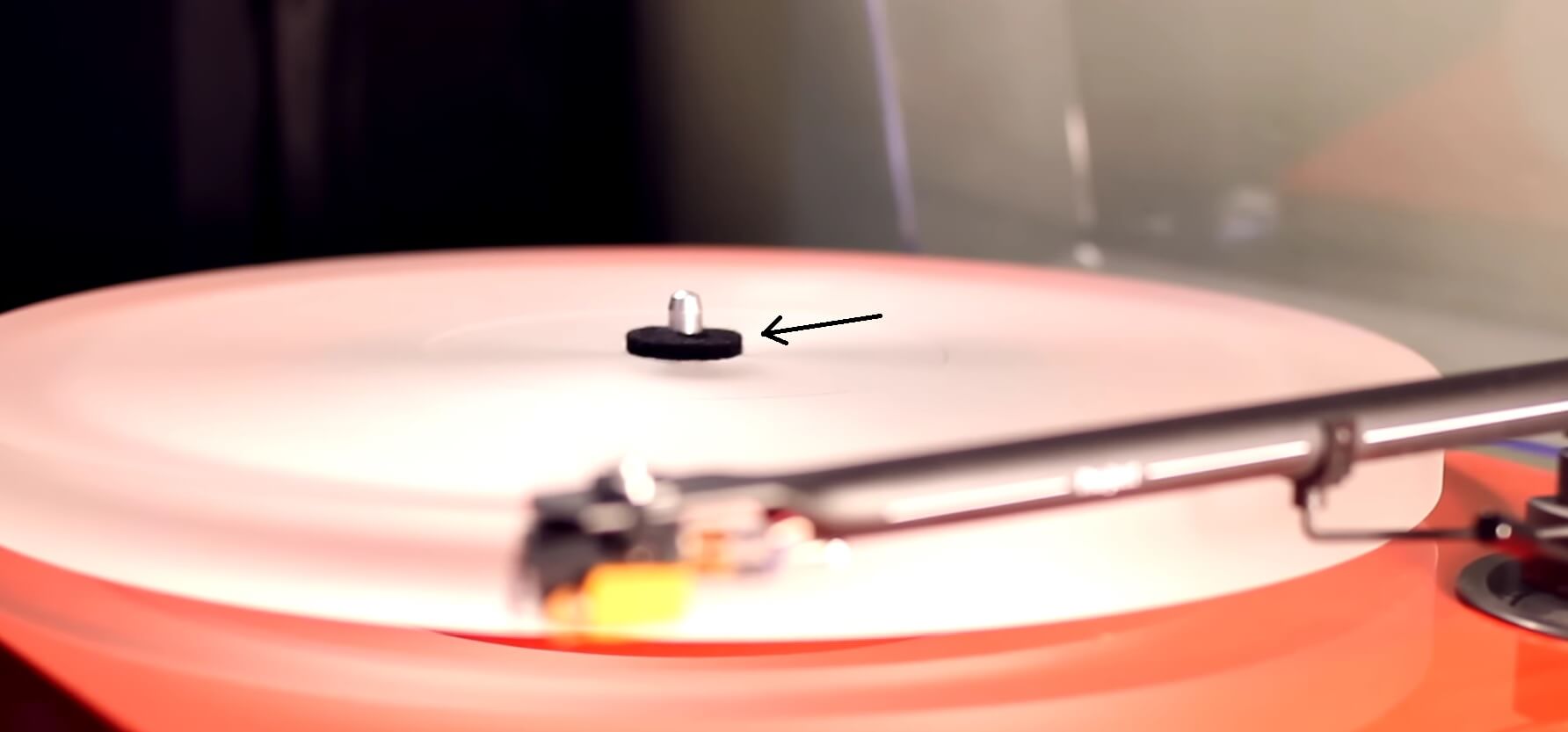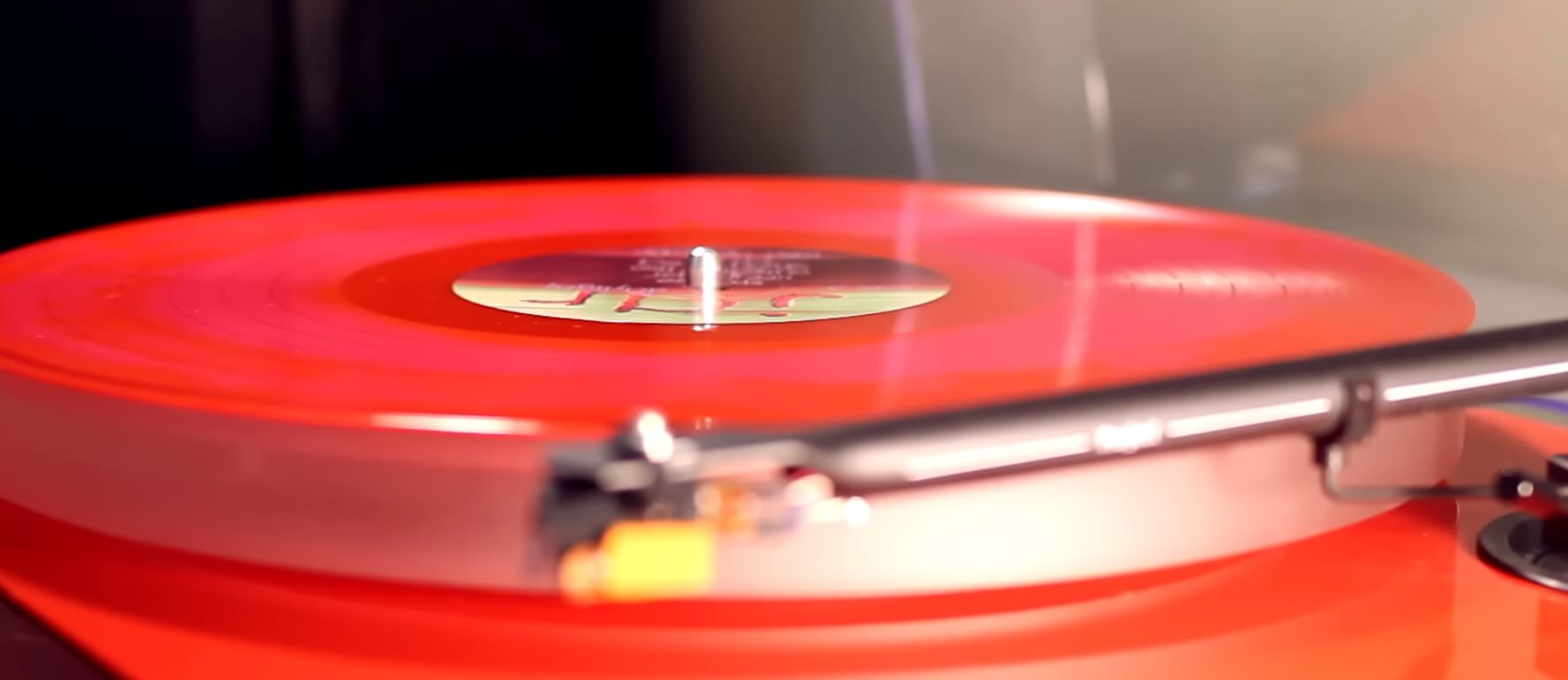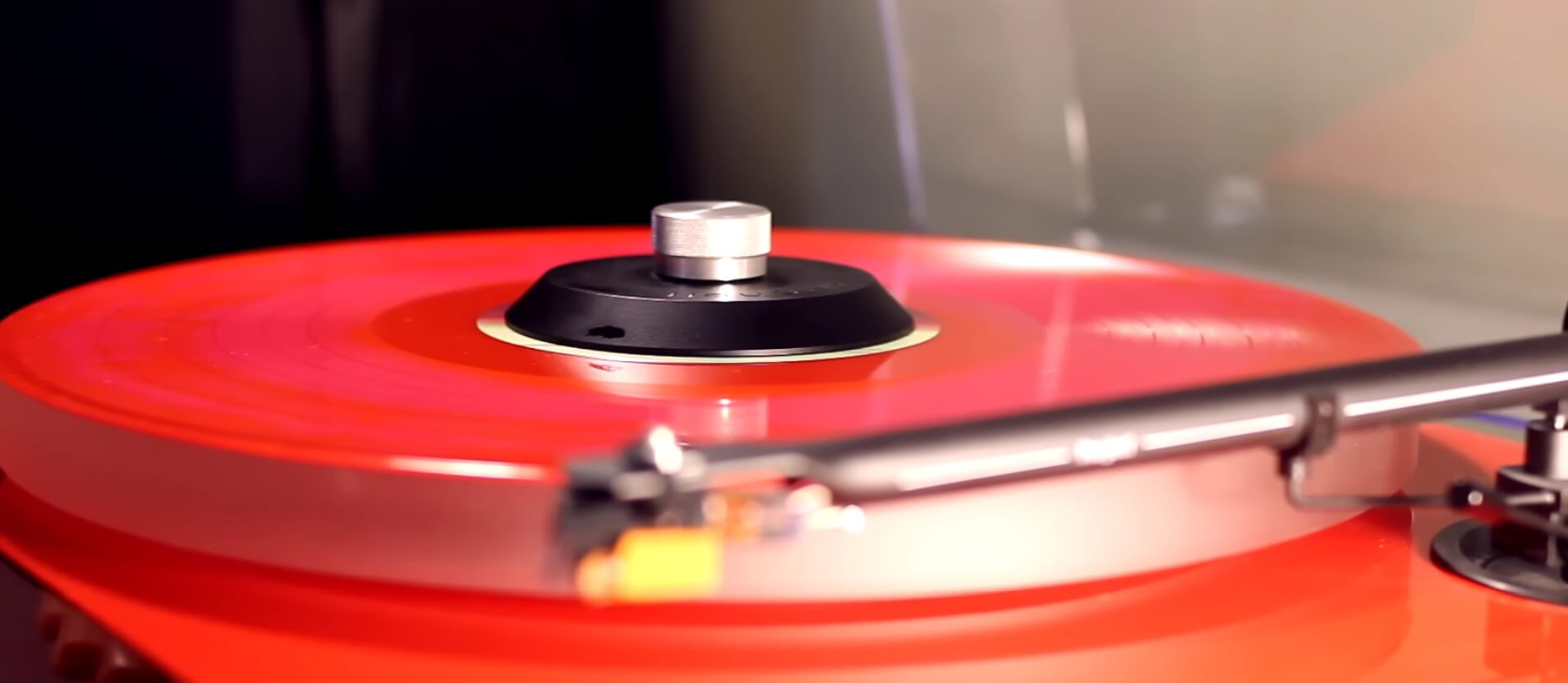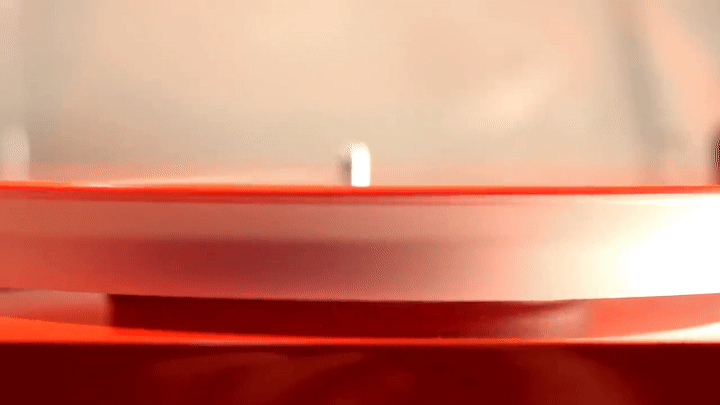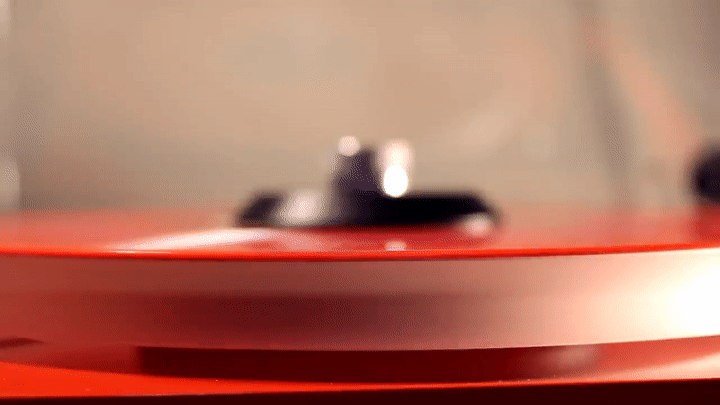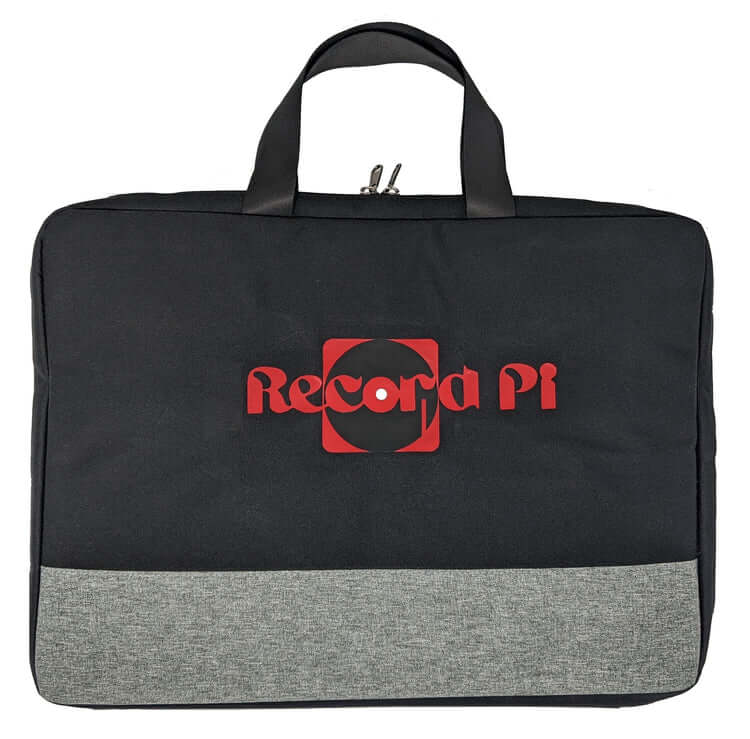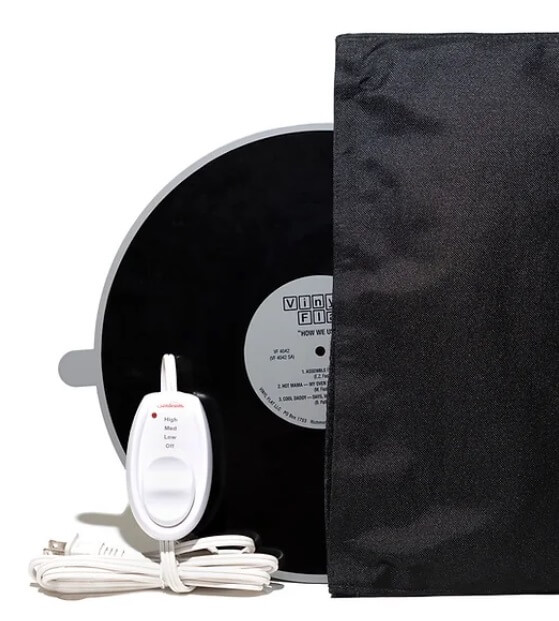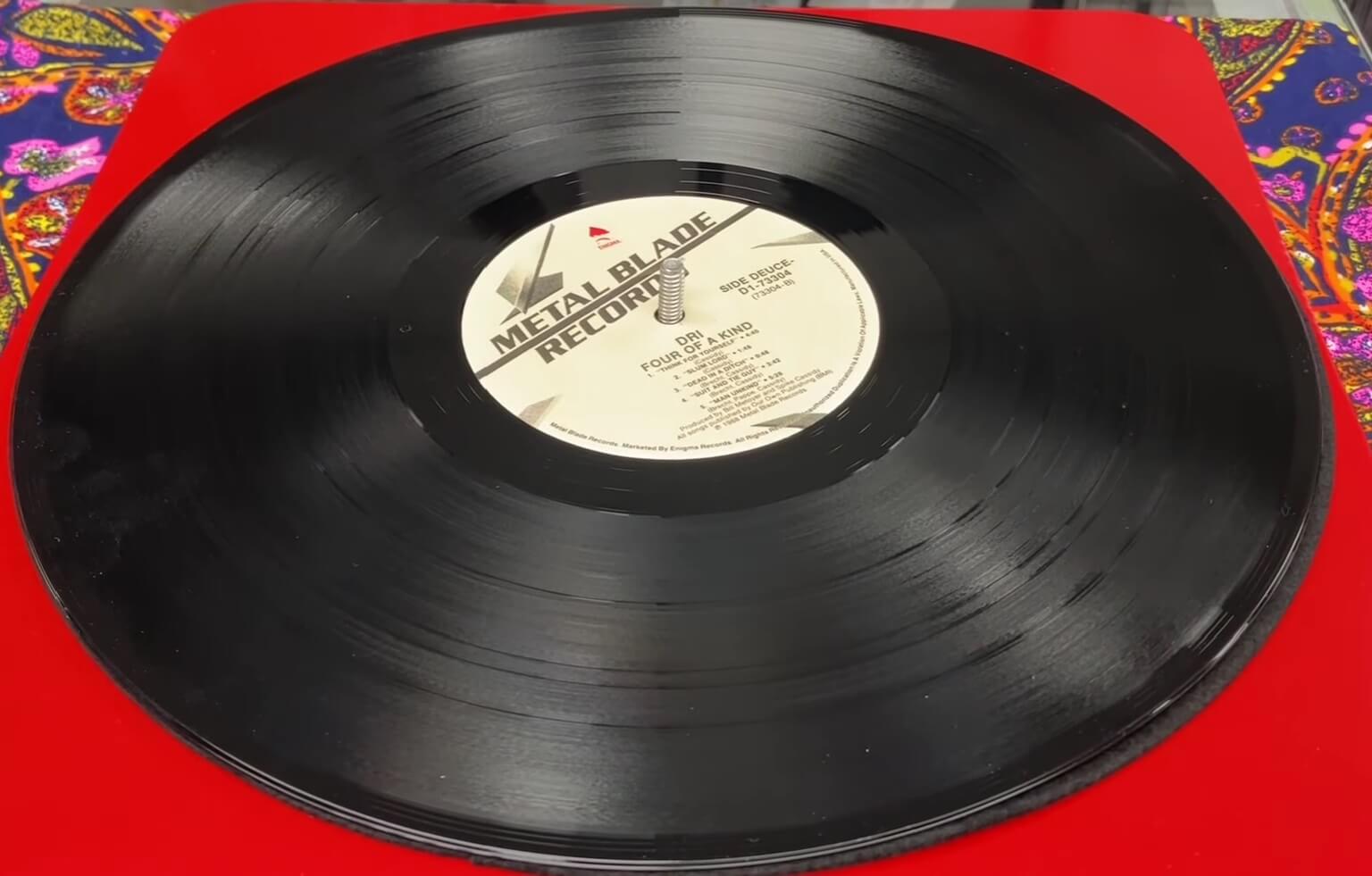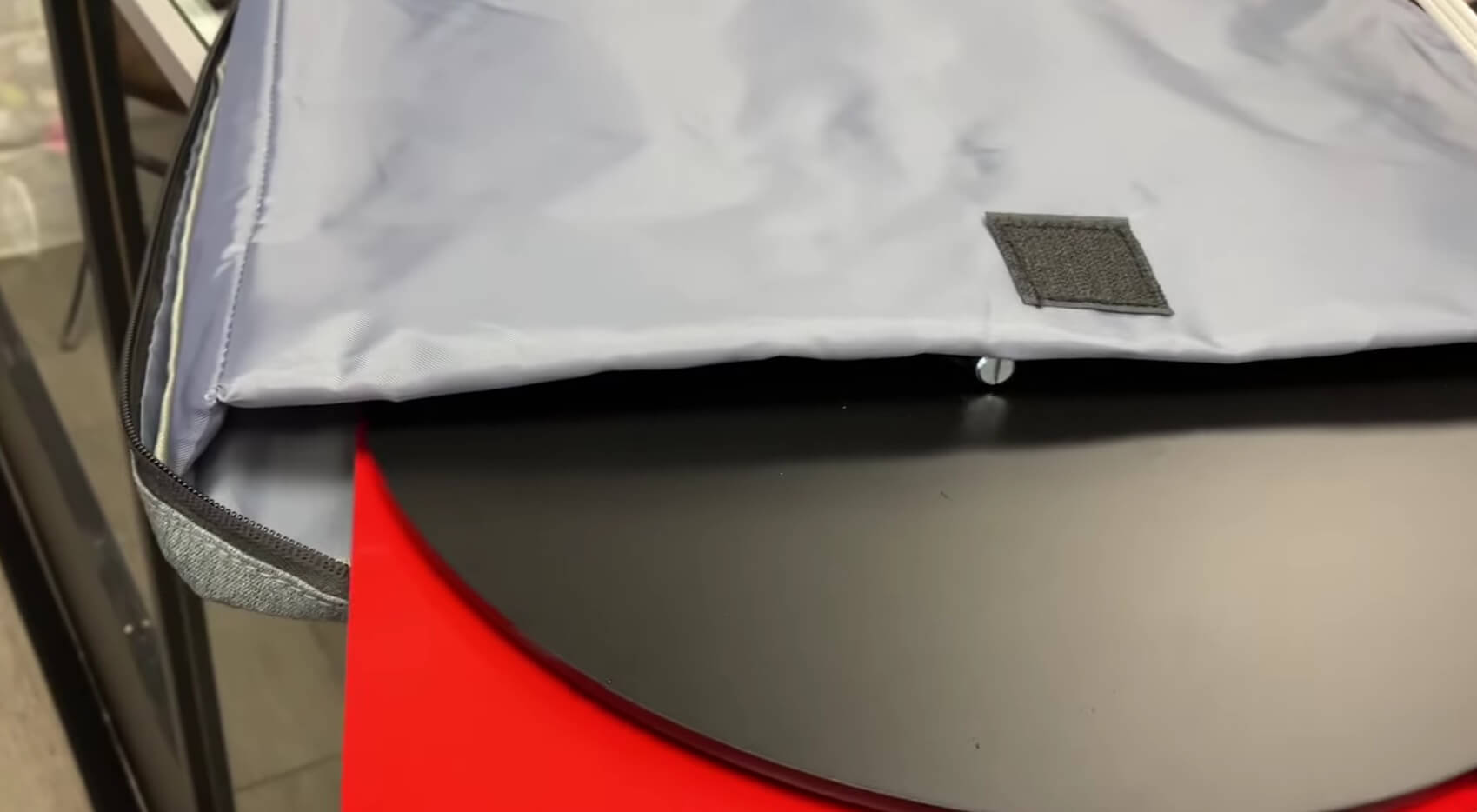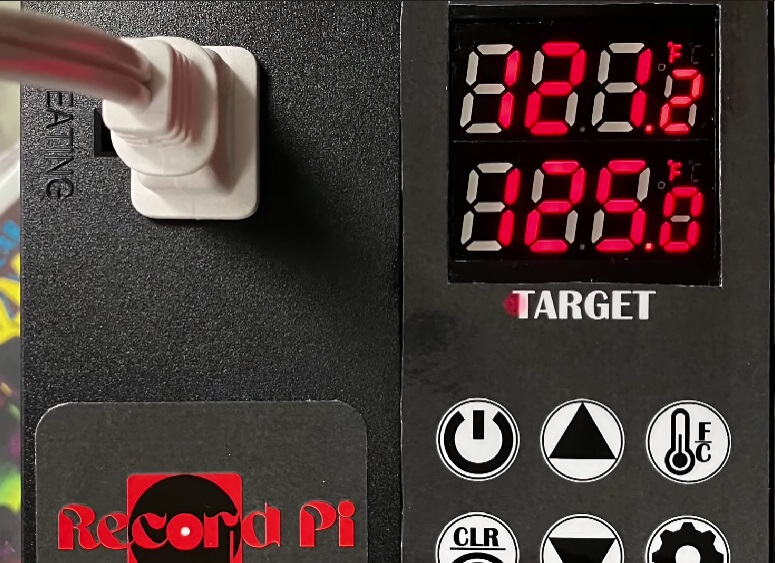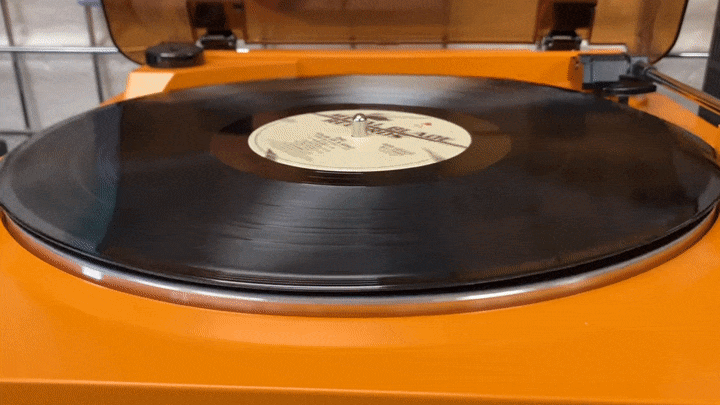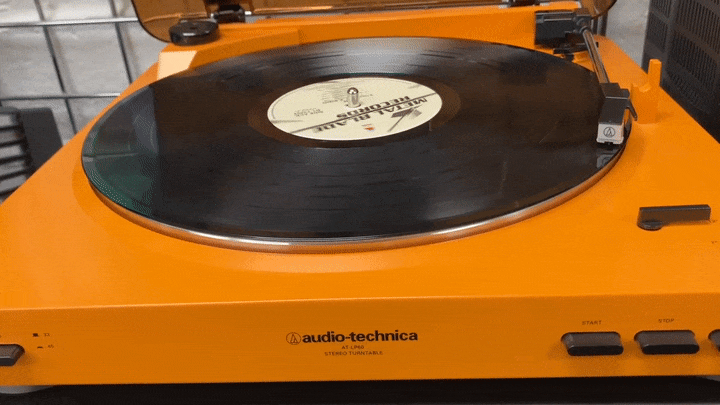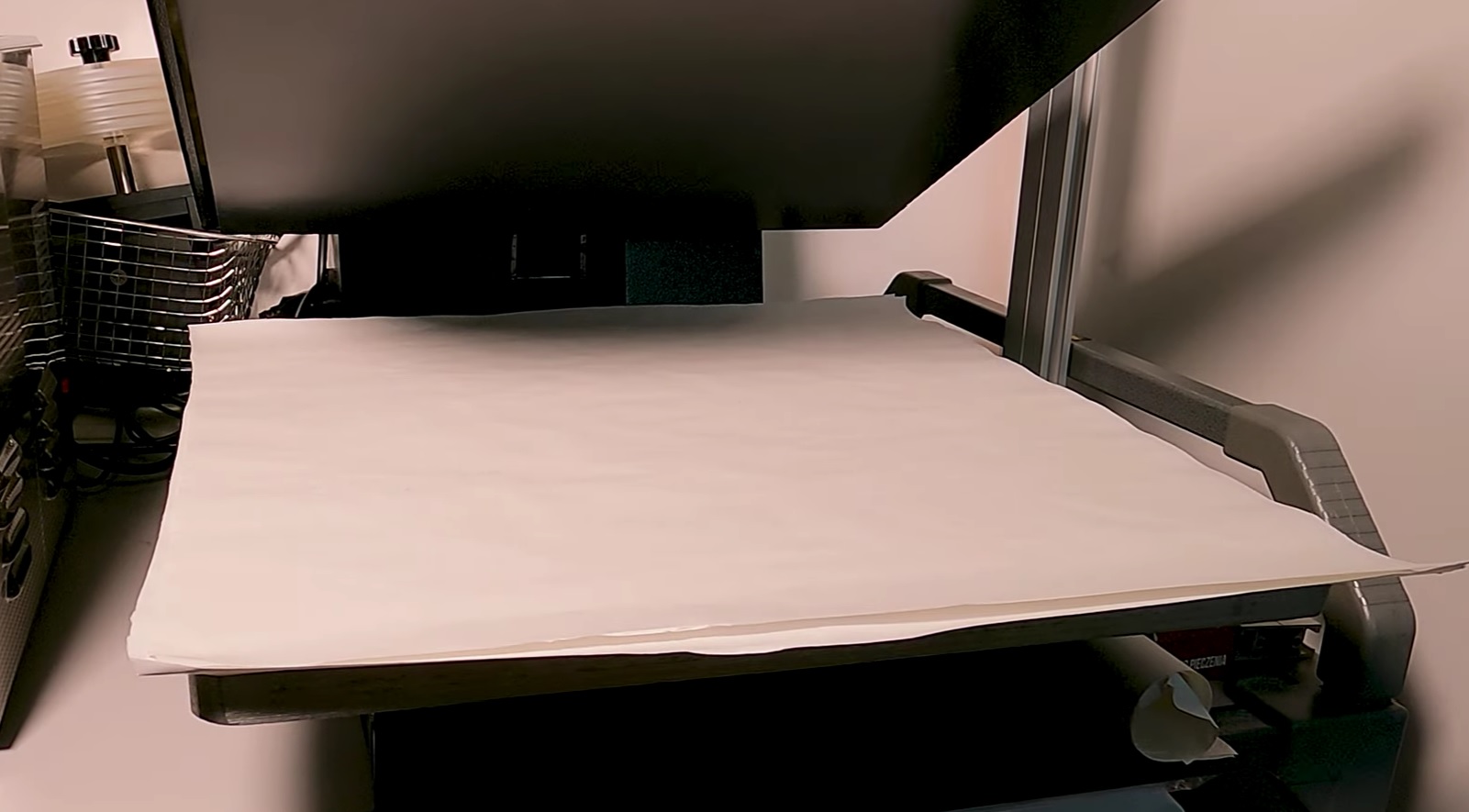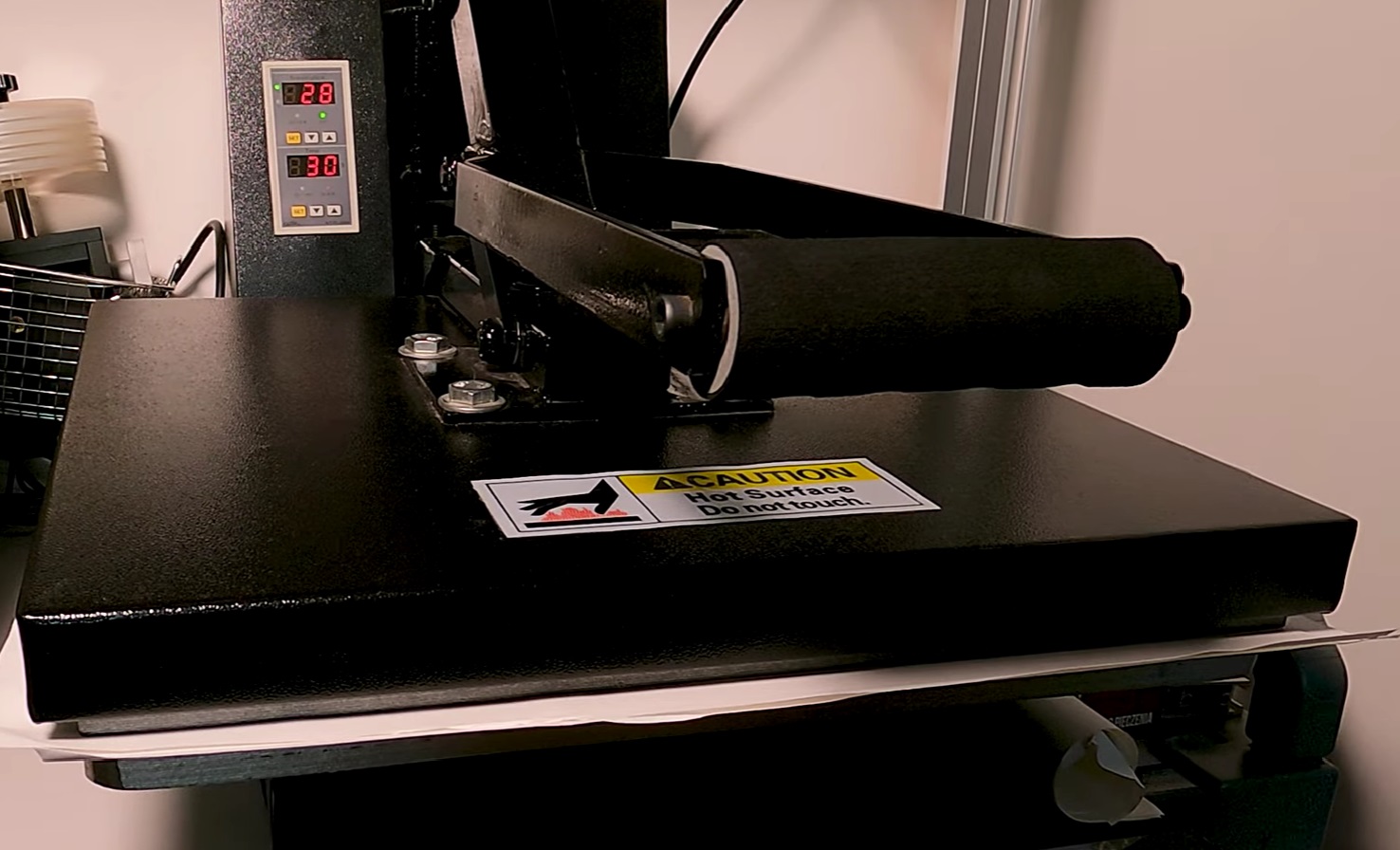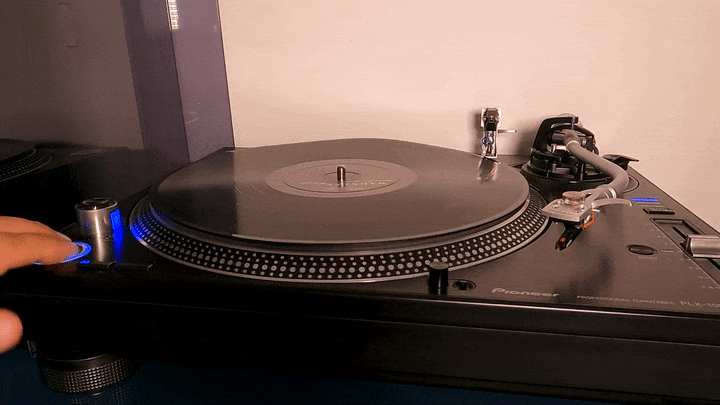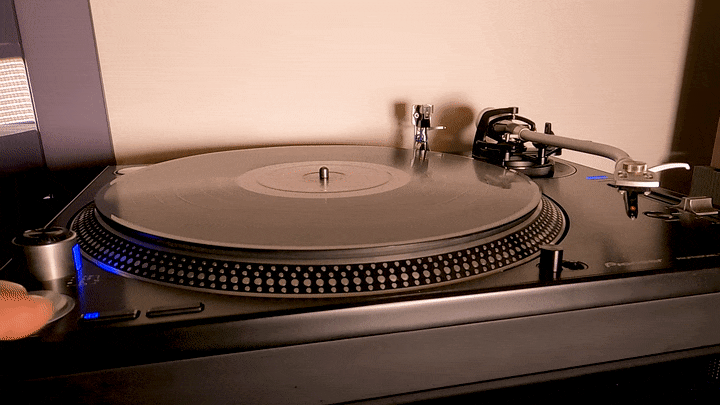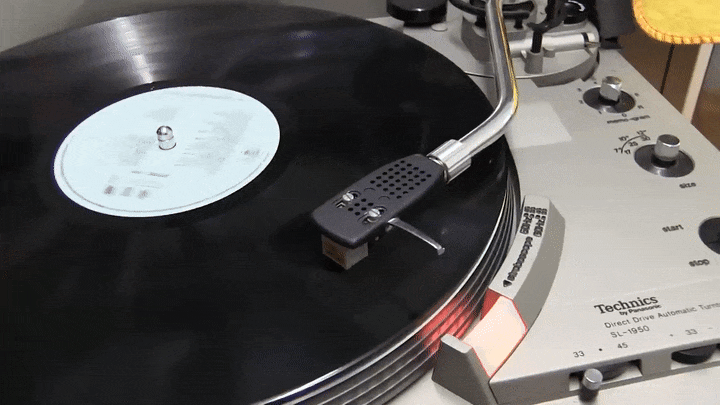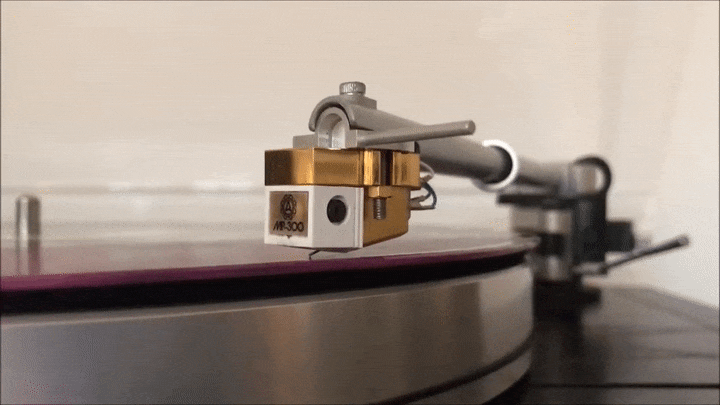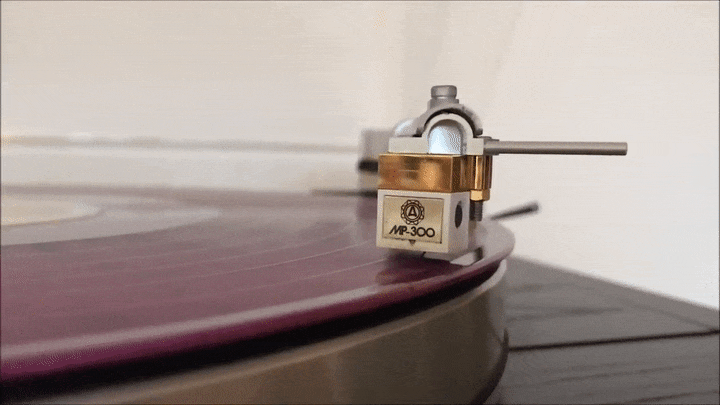Have you got your vinyl record warped?
Well, the most heartbreaking thing in the vinyl world is seeing your favorite record get warped, and let me tell you that I have gone through these heartbreaking situations many times.
To fix my records, I have researched a lot on online websites, forums, and much more. I also discussed finding a perfect and safe method to flatten warped records with friends and community members.
The record clamp has done a great job for me, but I intend to make this guide a one-stop solution, so I have to share every working method with you guys.
So, after a lot of research, I have drafted this article in which I have shared my personal experience about fixing records safely, along with multiple methods and the risks involved, so you can go through each method and select the one you think you can proceed with.
But, before checking the methods, I recommend you first examine your record.
How To Tell If a Record is Warped or not?
My preferred and best way is to put the warped record on the turntable and hit the start button. As the platter starts spinning, if you start seeing the waves on your record edges, then it is warped, otherwise, your record is in good condition.
For example, look at this animation below:
In the gif above, you will see a wave at the edge of the record, which indicates that the record is in bad condition and needs to be fixed.
Most beginners ignore this thinking. It is a normal wobble, but let me tell you that records are not supposed to wobble, and this type of wobbling can damage your stylus.
Well, there is one more question that I want to discuss before proceeding forward, i.e., which warped records can be fixed or which can’t.
Can you Unwarp all types of Records?
The answer is no. You can’t unwrap all types of records.
Let me explain this to you with an example:
Suppose the vinyl record, which used to be flat, is now warped due to improper storage. The answer is yes, you can fix the vinyl record, but sometimes we receive brand new vinyl that is already warped due to manufacturing defects, so the hope of fixing that vinyl is very low.
So, if you bought a brand new vinyl that was already warped at the moment you received it, then I suggest you get it replaced and save yourself a lot of trouble fixing it.
How to Fix a Warped Record:
All the methods mentioned in the article have a common and most important step i.e. cleaning the record properly. If you are trying to fix the record then you better make sure that it is clean and there is not a single dust particle on the record else you are going to regret it. For cleaning records, you can check out this article about vinyl records cleaning.
Recommended Methods:
Here are the recommended methods that I recommend you to follow:
Method 1: Record Clamp (Dish Warp Record)
Have a dish warp record?
Well, a record is called a dish warp record when either one side of the record is touching the platter perfectly but the other side is not or your record is perfect from the center but as it reaches the edges, it bends upwards.
Well, if your record seems to be a dish warp record then just take a deep breath, release the stress of unwarping a record, and gift yourself a record clamp.
That’s it.
Record clamp is very much underrated in the vinyl community and very less people actually know about this and how to use it properly.
Most people confuse record clamp with record weight but both are different.
A record weight looks like a clamp but all it does is put some weight on the record and the weight forces the record to stick on the platter. You can put it directly on the spindle and that’s it.
Well, the concept of record weight is similar to a record clamp but a record clamp works differently.
A record clamp comes with a felt washer or a nozzle tip and a clamp with a tightening knob and this equipment alone can save you from record skipping issues or distorted sound problems.
I have seen very less people sharing it online and Dan from VinylFury, I think is one of the first people who talked about it in this YouTube video.
Let me explain the concept in an easier way:
Step 1:
Remove the record from the platter and place a felt washer or a nozzle tip on the spindle.
Step 2:
Place the record on the spindle i.e. on top of a felt washer or a nozzle tip. Now, you will see the space between the platter and your record.
Step 3:
Place the clamp on the spindle and apply a little pressure on the clamp using your fingers until the record touches the platter properly and then, tighten the knob of the clamp.
That’s it. After tightening the knob, you will see the record sits perfectly fine on the platter.
Results:
Before Record Clamp:
After Record Clamp:
Well, some people think that this method will put some extra weight on the turntable and its motor which might damage it but trust me, the record clamps are very lightweight and when you are tightening the knob, the record is getting tightened between the felt washer/nozzle tip and the clamp. The pressure you are putting on the record before tightening the clamp is very low in real so the record clamp is not going to cause any damage to your turntable or your records.
Method 2: Vinyl or Disc Flattener Service
The vinyl record flattener service also known as disc flattener service is one of the safest method you can choose to get your vinyl fixed.
Nowadays, I don’t get my record warped, thanks to the storage techniques I follow but when I was a beginner, I didn’t know any record storage techniques so most of my records got warped over time.
Just like you are doing research currently, I also did the same but didn’t find any safe solutions to fix them. So, after discussing it with my friends, I choose vinyl flattener services, and guess what? I was quite impressed with their work and they just fixed my records and delivered it to me within 1 day.
I paid around $6 for each record which I think is quite a good price for a $30-$100 LP and I feel, this is a lot better than trying multiple DIY methods and seeing your record getting ruined in front of your eyes.
To use record flattener services, you just need to visit any record player shop nearby and ask them if they provide this service or not.
If yes, then you are good to go otherwise, you can ask them about providers and they will guide you much better.
My Suggestion: Always try to get 1 cheaper record fixed by them and check the results. If you are satisfied then you can keep using their services otherwise, you can always find someone else.
My thought here is – “Not everyone is professional”.
This method has some cons too. Like, if you have a large collection of warped records then it becomes a hell expensive method.
Method 3: Record Pi or Vinyl Flat
Record Pi and Vinyl Flat tools are record flattener tools through which you can unwarp your badly warped record very easily. The working principle of both tools is similar to almost all the methods i.e. heat with pressure.
Record Pi:
With this tool kit, you will get a thermal bag, 2 metal plates, i.e., a record protector or groove guard (a big piece of square metal for the bottom and a rounded one for the top), and temperature control units. You will also get a felt mat bigger than a 12-inch record with just space for a spindle which will work for all kinds of record sizes but still record PI also provides felt mats for 12-inch and 7-inch records separately. You will also get an instruction manual along with the kit that I recommend you read before making any move.
Vinyl Flat:
With this tool kit, you will get a groovy pouch (thermal pouch) with a temperature control knob, 2 round cast iron plates (one for the bottom and one for the top), 2 felt mats, and a digital thermometer.
So, how do these tools work?
Well, both tools work the same, and let me explain that part to you step by step using record Pi.
Step 1:
Place the bottom groove guard on the table and place the basic all-size felt mat on it.
Step 2:
Place your warped record on the felt mat
Step 3:
Place the round piece of metal or top groove guard over the record
Step 4:
Tighten the metal pieces with the cylindrical wing nut gently. There is no need to apply the force on the record by tightening it because the weight of the top groove guard is enough for your record to get unwarp.
Step 5:
Now, place the unit inside the bag and turn on the heat with temperature control. The record Pi suggests starting with 125°F with a minimum of 2 hours of bake time in which the unit itself takes around 30-40 minutes to reach the specified temperature.
Our Recommendation:
- For Vinyl under 180 grams: 125°F is a good temperature to start with.
- For 180 gram Vinyl: 135°F is a good temperature to start with.
Caution: Do not increase the heat above recommended temperatures. In case you are not seeing the results then I recommend trying the same process 3-4 times. Some vinyl even takes more repetition depending upon the its condition.
Step 6:
After baking time is over, you need to let the record sit inside the groove protector for around 45 minutes to 1 hour to cool down naturally. That’s it.
Results:
The record Pi and Vinyl Flat gives very good results and I have seen a lot of people getting success with these tools. If you have a large amount of collection, you can buy this tool for sure.
Before Using Flattener Tool:
After Using the Record Flattener Tool:
Method 4: Orb Disc Flattener
If you have heard that there is a specific tool to fix the warped vinyl record then the Orb disc flattener is one everyone is talking about. This device is very expensive and the listing price varies between $1000 to $2000.
If you are looking to provide vinyl-flattering services in your area then this device is a must and you will be going to get ROI in no time.
But, if you are a record collector then I don’t recommend buying it instead you can avail record flattering services in your area or try the methods that we have mentioned above.
So, these 4 methods are the recommended methods whenever you want to fix your bad records.
DIY At Home:
Now, we are sharing DIY methods that are getting good results and people are talking about these methods all over the internet.
Method 1: Flatten Records Without Heat
Without proper heat control, your records can melt in no time and many people already got their records melted while trying different methods.
So people started looking for a method which doesn’t require any heat. Many of my friends also asked how they can flatten warped records without heat.
Well, without heat, you can fix your record but you have to be very patient because it is a non-promising and longer-duration method.
The steps involved are:
1) Take two books bigger than your vinyl record size.
2) Place one book at the bottom and then place your record over it (Imp: Make sure the book is covering your record properly and your record is sitting inside the record sleeve).
3) Now, place the second book on top of your record. Put some weight on the books but make sure the weight is equally distributed on all 4 corners of the books and store it in a proper place.
That’s it. Now, you just need to wait.
This method might take a minimum of 8 weeks or even months and it depends on the warped condition of your record.
But, let me tell you once again that this is not a promising method but still, I have seen many people getting success using this method.
Method 2: T-Shirts Heating Press (Unique Method):
This is the most unique method that I found while researching and the results of this method amazed me very much.
I know, not all of us have a heating press at our home but as I found this method working flawlessly so I decided to share this with you guys.
Here are the requirements for this method to work:
- 2 Parchment Paper (Size must be bigger than your record)
- T-shirt heating press
- Patience
Now, let’s proceed further.
Step 1:
Put one parchment paper at the base of the heating press then put the record on top of that. After that, place the second parchment paper on the top of the record again. Make sure parchment paper is covering the record from top and bottom properly.
Step 2:
Close the press
Step 3:
Set the temperature to 60°C and let your record rest there.
Step 4:
When the heating press reaches 60°C temperature then you need to turn off the press and leave your record inside the press until it cools down naturally.
Step 5:
Once your record has cooled down, take it out of the press, put it on the turntable, and spin it. You will see some improvement. You can repeat the steps multiple times to get the desired results.
Results:
Before Using T-shirt Heating Press:
After Using the T-shirt Heating Press:
Method 3: Oven with Glass Panes (2 Ways)
There are 2 ways or methods but I recommend you to try only the first one.
Note: If you can’t set the temperature to 60°C in your oven then please do yourselves and your record a favor, don’t even think to try it. You will get your record melted in no time.
Here are the requirements:
- 2 glass panes (size must be bigger than your record)
- 2 cardboard cutouts of the same size (size must be bigger than your record)
- Record paper sleeve
- Infrared thermometer
- Oven
Now, let’s check both methods one by one and I recommend you follow the first method only:
1) Using Oven But Smartly (Recommended)
Step 1:
Clean the glass panes using any cleaning solution
Step 2:
Place your glass panes inside the oven and turn on the heat. Keep checking the temperature of the glass panes in between. The idea is to make the glass pane’s temperature rise to around 60°C.
Step 3:
Once, the glass panes have reached a temperature of 60°C, put the one glass panes sheet on the table. Make sure, you are wearing your kitchen gloves otherwise, you need to fix your burnt hands before fixing your vinyl. Haha. Just Kidding!
Step 4:
Now, place one cardboard cutout on the center of the hot glass pane and then place your record on the top of the glass pane. The record must be inside the record sleeves.
Step 5:
Place the other cardboard cutout on the top of the record and then place the second hot glass pane on the top of the cardboard i.e. making a sandwich.
Step 6:
Leave it until the glass panes’s temperature matches the room temperature.
Step 7:
Now, check whether your record is fixed or not. Most probably, you will see improvement in your record. You can repeat the method multiple times to get the desired results.
If you want the process to be a little quicker, you can remove the cardboard cutouts from the sandwich and place the record inside the record sleeves directly on the heated glass panes.
Results:
2) Directly in the oven (Strictly Not Recommended)
Step 1:
Put one glass pane on the table and place the record (inside the record sleeve) on it. After that, place the second glass pane over the record. In normal words, make a sandwich of glass panes with your vinyl record.
Step 2:
Turn on the oven and set the heat to 60°C
Step 3:
Put the glass pane sandwich inside the oven and let it be there for around 60 minutes. Keep checking the record status in between.
Step 4:
After 60 minutes, take the glass panes out of the oven, place them on the table, and leave them until the glass pane’s heat reaches the normal room temperature.
Step 5:
Check the improvement and keep repeating the steps until you are satisfied.
Results:
Before Oven:
After Oven:
While both methods include working with the oven heat, the first method has a different approach and it is the safest and best method when you are working with the oven.
The first method also has a good success ratio as I have seen a lot of people getting results but talking about the second method, I strictly don’t recommend even trying it. You will get your record grooves melt before even realizing it.
Method 4: Hair Dryer With Glass Panes
You need to be very careful while following this method and make sure you follow the instructions properly. This method also has a lot of success stories.
Here are the requirements for this method to work:
- 2 glass panes (size must be bigger than your record)
- Record paper sleeve
- Hai dryer
Now, let’s try this method:
Step 1:
Put one glass pane on the table and place the record (inside the record sleeve) on it. After that, place the second glass pane over the record. In normal words, make a sandwich of glass panes with your vinyl record.
Step 2:
Use your hair dryer directly on the glass panes. But please maintain a good distance between the hair dryer and glass panes and also keep moving the hair dryer so that hot air doesn’t keep landing on a single spot on your record.
Step 3:
Use a hair dryer until the record gets hot and once it gets hot, just put some weight on the glass panes. The weight must be equally distributed on the glass panes so take an object whose size is bigger than the glass panes.
Step 4:
Leave it until the temperature of your record reaches room temperature.
That’s it. Now, check the condition of your record. You will see some improvement in your record condition. Keep repeating the process until you are satisfied with your record.
Here is the video tutorial for this method:
Method 5: Sun & Car Method
I have seen people talking about it online in forums and offline too and it has done wonders for them so if you could give it a try then maybe you can get your record fixed.
Here are the requirements for this method to work:
- 2 glass panes (size must be bigger than your record)
- Record paper sleeve
- Hot sunny day outside
Now, let’s try this method:
Step 1:
Put one glass pane on the table and place the record (inside the record sleeve) on it. After that, place the second glass pane over the record. In simple words, make a sandwich of glass panes with your vinyl record.
Step 2:
Put some clamps on the side of the glass panes so that your record doesn’t come outside the glass panes or its record sleeves
Step 3:
Put the glass panes in your car on a hot sunny day and let it be there until the sun sets. That’s it.
You might need to repeat the steps multiple times to get the desired results. I have also seen a lot of people got success with this method so if you try once, you can be one of them.
How to Prevent Records from Getting Warped:
These are simple yet effective storage methods that you should follow:
1) Storing records vertically
I recommend you store the vinyl vertically wherever you want. I usually store them in a cart.
2) Away from direct sunlight
Keep the storage area away from sunlight because the heat from the sunlight is one of the major reasons behind vinyl warping.
3) Cold and humidity free
The room where you are storing your records should be cold and humidity-free.
That’s it. I have been following these storing methods and not even a single record has warped in recent years.
Frequently Asked Questions:
Q1: Is it OK to play a warped record?
A slightly warped record is good to play but I won’t recommend playing a badly warped record.
The warp doesn’t let the stylus run smoothly inside record grooves and it can even cause the stylus to jump over the records which will eventually cause the record skips and sound distortion. On top of that, your stylus will also get damaged.
Q2: Does storing records flat damage them?
Yes, stacking records on top of each other won’t only make it difficult to get the bottom one out from the stack for playing but the horizontal stacking will also put pressure on the records at the bottom which will damage them in the long run.
Q4: Are warped records ruined?
No, warped records are not ruined. You can always use methods to fix warped records.
Q5: Do warped records sound bad?
Yes, warp can cause the stylus to jump over the record which will cause the record to skip and result in sound distortion from the speakers.
Q6: Can warped record damage the stylus?
Yes, the warped record can cause the stylus to jump over the record which causes damage to the stylus.
I have shared almost all the working methods to fix or flatten a record through professional services or at home. Do try these methods and let me know the results in the comment below.
Or if you got success with a different method which is not mentioned above then please share that method with us. We will add this method here which will be very helpful for the whole vinyl community.

